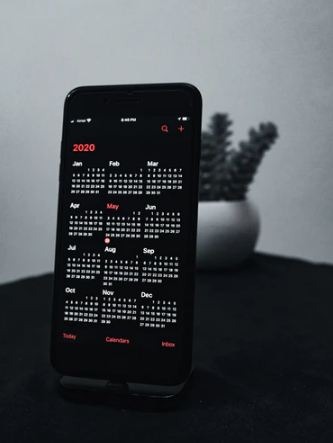Do you know someone who has a birthday on September 31 or February 31? No? well, there is an excellent reason for that, because they aren’t even actual days. This is why most of us probably wonder why February only has 28 days, September has only 30 days, and October has 31 days. What’s the deal with the months not having the same number of days?
To answer this age-old question, we must dig deeper into the history of our calendar.
The Julian Calendar
Most of us probably know Julius Caesar, who helped establish the Roman Empire and conquered France. However, he was more than a cunning politician and a brilliant general. This is because he was also the one who introduced what’s known as the Julian calendar. This is a civic calendar instituted by Julius Caesar, and it was used in 45 BC. He pondered over the Julian calendar during his stay in ancient Egypt, where he studied the Egyptian solar calendar that eventually became the basis for his own calendar. However, just like his impressive political success and military tactics, his calendar was no less revolutionary simply because it ignored the moon.
This is because the earliest Roman calendars, which are the calendars of the greatest republic and empire during that time, were all based on the lunar phase cycle. This presents a problem because calendars based on the lunar phase cycle go a bit out of sync with the actual seasonal year, which is why two essential elements in our modern calendars actually go back to Caesar’s brilliant ideas as a result.
The first concept is the division of a year into twelve months, with each month has a set number of days, which equals the number of whole days in a seasonal year. That number of days is 365.
The second important innovation is the idea of a leap year. This is when an additional day is added once every four years, which is why the average length of a Julian calendar year became 365.25 days, which is basically the same length as the actual year. After it was established, the Julian calendar became the most important calendar everywhere from the Middle East to England.
The Gregorian Calendar
Even Christianity dominated the world thereafter. This calendar that a pagan developed was so good and effective it survived for over 1,500 years. However, the Gregorian calendar slowly began to be used all over the world and replace the Julian calendar, with the last countries finally adopting the former in the 20th century.
Pope Gregory XIII introduced the Gregorian calendar in 1582, and it was gradually adopted by all countries around the world and became the international calendar of choice. This change was made because even though the Julian calendar was a lot better than the calendars that preceded it, it gradually fell out of step with the seasonal year.
Such a problem would not have occurred if the average length of the year was precisely 365.25 days, or 365 days and 6 hours. But the true mean length of the year is a bit shorter. It’s 365 days, 5 hours, 48 minutes, and 46 seconds, which means that after 1,500 years, the Julian calendar was ten days behind the actual solar year.
This is why Pope Gregory came to the rescue, and he decided to solve this problem by using two approaches that were introduced to him by others. First, he announced that the day after October 4, 1582, would be automatically October 15. It is very evident how powerful the Catholic church was back then because the Pope could literally change the numbers on the calendar, and everyone would simply listen.
This brilliant move put the calendar back in line with the seasonal year. To prevent Julian calendar-like errors from accumulating, the Pope introduced a second solution that involved removing three leap days every 400 years.
Every century year that is not divisible by 400 is no longer a leap year as a result. Meaning the years 1700, 1800, 1900, 2100, and so on did not and will no longer have a leap day. However, because the year 2000 is divisible by 400, it was a leap year.
Such a change to the calendar tells us that the mean length of the calendar year is now 365 days, 5 hours, 49 minutes, and 20 seconds. That’s only 34 seconds longer than the actual year. So much so that it will take 2,500 years for the Gregorian calendar to fall out of step by one day.
